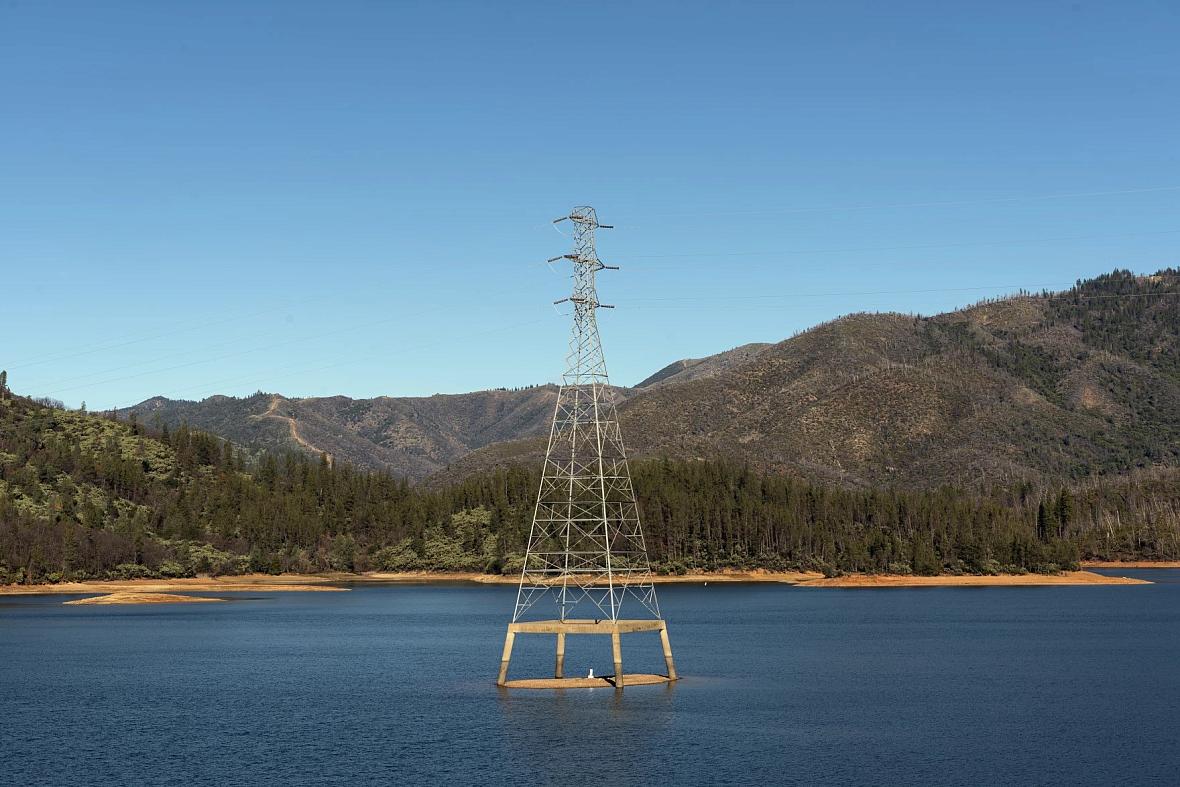Changes are coming to how millions of Californians pay for electricity. Here’s how soon it could affect your bill
The story was originally published by North State Public Radio with support from our 2024 California Health Equity Impact Fund.

An electrical transmission tower in Whiskeytown, Calif.
Carol M. Highsmith, Library Of Congress
Big changes are coming to how investor-owned utilities, like Pacific Gas and Electric Company (PG&E), bill customers for electricity. At its voting meeting Thursday, energy regulators at the California Public Utilities Commission (CPUC) unanimously approved a proposal to add a fixed charge for infrastructure costs.
As soon as the end of next year, most customers will see a charge of $24.15 added to their bills. Customers on low-income plans would see a charge of either $6 or $12, depending on their income. The overall price of electricity will be reduced slightly, by about 5-7 cents per kilowatt-hour.
Why energy commissioners favor the new rate structure
The new rate structure aims to separate the costs of upgrading infrastructure and maintaining the grid from the price of electricity. Currently, California is one of the only states in the nation where investor-owned utilities don’t have a separate fixed charge for infrastructure. Instead, utility companies roll the cost of infrastructure upgrades into the price per kilowatt-hour.
Commissioners said the new billing structure would be more equitable for Californians who have to use more electricity to heat or cool their homes. The CPUC estimates that people living in Fresno, where temperatures reach over 100 degrees, could save as much as $33 a month running their air conditioning in the summer.
“This change simply reallocates how existing costs are divvied up in bills, it does not introduce new costs or fees,” said CPUC President Alice Reynolds. “And this makes a lot of sense because those infrastructure costs don't vary depending on how much electricity you use.”
Reynolds said that under the new billing structure, customers would also be better off financially if they purchase electric vehicles or swap out gas appliances for electric ones.
“A typical customer who installs electric space and water heating, kitchen appliances and a dryer will save $11 to $19 a month,” she said. “ Someone who electrifies their home and vehicle, they would save an average of up to $44 a month compared to the status quo.”
The California Public Advocates Office, a state-run organization that represents Californians in public forums, had more conservative estimates of what bills could look like. It estimated that customers not enrolled in low-income programs could see between $6.79 in monthly savings to an increase of $11.50 per month. It still endorsed the proposal calling it a step in the right direction.
What members of the public had to say
Members of the public who commented ahead of the May 9 vote were more wary of how it could affect their bills. Yvette DeCarlo, who said she represented 260 nonprofits statewide, said their coalition opposed any policies that could raise prices.
“For millions who live paycheck to paycheck, raising monthly utility bills even a little bit can be devastating, especially on top of all the increases the board has recently approved,” she said.
Still, some commenters recognized the benefits the new structure may offer to inland Californians. Gracyna Mohabir, with California Environmental Voters, said the organization was in favor of the plan. Currently, those living in temperate coastal regions don’t have to pay as much for electricity. That means inland residents pay more toward the infrastructure costs.
“We believe it'll ensure that all ratepayers are contributing to the upkeep of the grid, without this burden falling disproportionately on low-income households,” she said.
What happens next
The new rate structure would not be implemented until the end of 2025 or the beginning of 2026. It does not affect utility companies' ability to ask the CPUC for permission to increase either their rates or the fixed charge.
CPUC Commissioner Darcie Houck voted in favor of the new plan, but also recognized the public’s fear that the fixed-charge would be yet another tool for utilities to raise bills.
“We've heard from the public that electricity bills in California are high and it is critical that we do not allow the fixed portion of these bills to increase rapidly or unreasonably,” she said.
Houck said she appreciated that the revised proposal says requests to increase the fixed-charge would need to be heard at a public meeting where residents have a chance to comment.
“I was pleased to see the revisions, and the decision that's before us today that requires any adjustments to the fixed charge to be addressed in this proceeding … and not through the general rate case.”
Increases to rates are decided during a general rate case hearing, which happens for each investor-owned utility every few years. For example, PG&E’s rates are approved every four years, most recently in November of 2023. Members of the public do have a chance to comment during those meetings, but they take place much less frequently than other voting meetings.


